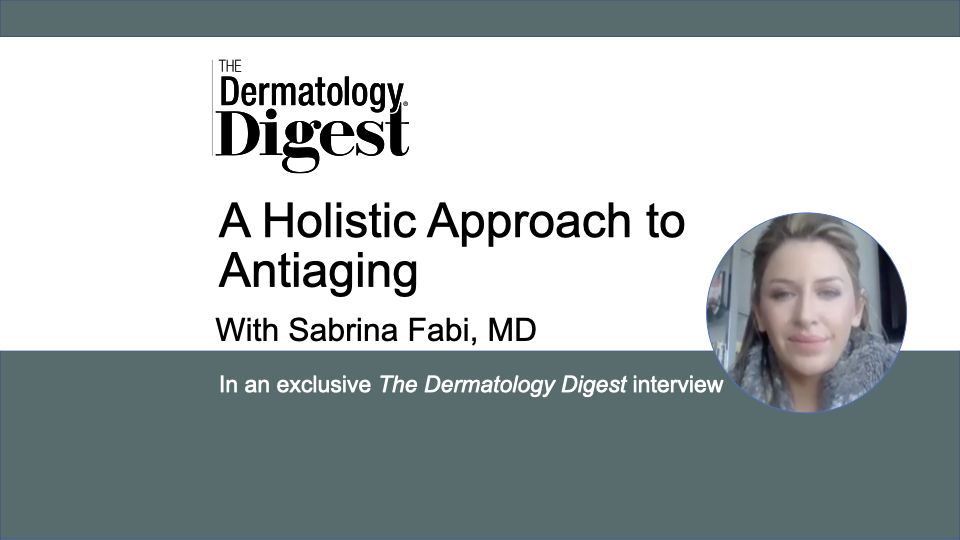Dr. Sabrina Fabi discusses health-related interventions that help to slow the aging process.
“Obviously we have many injectables and energy-based devices, and the technology to be able to mitigate the signs of aging continue to advance, but there are definitely things… that we can recommend for our patients… that also can minimize the impact—or at least decrease and not support—the acceleration of aging,” says Sabrina Fabi, MD, Cosmetic Laser Dermatology, San Diego, Calif.
Those recommendations include diet, sleep, exercise—a host of extrinsic factors that can affect the aging process.
“It is generally accepted that aging has two principal determinants: the intrinsic disposition (genetic make-up, somatic capacity and composition) delineating what is maximally possible, and extrinsic factors (nutrition, exercise, hormones, dental hygiene, stress, environmental influences) determining how the pre-set frame of opportunity is exploited in the course of the individual aging trajectory,” says Dr. Fabi.
While there are limited studies that address holistic antiaging strategies directly, Dr. Fabi says it’s possible to draw correlations from others in some cases.
In an effort to provide evidenced-based recommendations for these kinds of interventions, she and coauthor Sandeep Saluja, MD, published, “A Holistic Approach to Antiaging as an Adjunct to Antiaging Procedures: A Review of the Literature,” a review paper on the subject matter in Dermatologic Surgery in 2017.1
In an exclusive video interview with The Dermatology Digest, Dr. Fabi draws on her research to explain the connection between sleep and skin barrier function and bone mineral density loss, as well as strategies for improving sleep quality and duration. She also discusses research that connects high-intensity exercise with younger skin composition and talks about the negative effects of pollution on the skin and on bone mineral density.
Case in point, “Even if you are running, but you’re choosing to run outside near a highway in a very polluted city, then you might be adding to your brown spots, not just from the UV rays, but also from the pollution,” says Dr. Fabi.
While these may sound like simple “good health” or “healthy living” practices, there’s more at work here than mere health benefits.
In terms of exercise specifically, “We don’t really realize how it’s intimately associated with the signs of aging,” says Dr. Fabi. “We all know that it can participate in making us be healthier, but how does it actually correlate with physical signs of aging, not just cardiac health or Alzheimers?” she posits.
It’s also important to be mindful of other factors that contribute to aging, such as stress.
“Stress, we know, can be a number one contributor to a lot of disease processes, whether it’s cardiovascular health or whether it’s… Alzheimer’s, but we now also know that it has a negative impact on bone mineral density because of the increased cortisol levels over time.”
While exercise and sleep may contribute to decreased stress levels, Dr. Fabi advises to also consider an inner focus.
“We can all also participate in activities like mindfulness and yoga and meditation, which can also help decrease those cortisol levels, so that one doesn’t get the negative impact of those high levels in our bloodstream all the time.”
Reference
1. Saluja SS, Fabi SG. A Holistic Approach to Antiaging as an Adjunct to Antiaging Procedures: A Review of the Literature. Dermatol Surg. 2017 Apr;43(4):475-484. doi: 10.1097/DSS.0000000000001027. PMID: 28359075.


